World premiere of the ID. Buzz: VW presents the ‘Bulli for a new era’
The long-awaited VW ID. Buzz has celebrated its premiere. Volkswagen praises the “first purely electric bus and van series in Europe” in the highest terms. With the premiere, further data on the electric bus has been announced.
In the run-up, Diess had set the bar high when he spoke to the assembled VW team in mid-February of “certainly one of the most exciting vehicle launches in the world this year.” “Because even when I started at Volkswagen in 2015, I wanted to finally bring the original Bulli back to the road after many hapless studies that Volkswagen had presented,” Diess said at the works meeting. “I fought for this project personally, and my colleagues also put a lot of effort into it. It’s a car that embodies everything the Volkswagen brand stands for: passion, emotion, reliability, a lifestyle of freedom and independence.”
The European versions of the 4.71-meter-long electric van will start with a 77-kWh battery at market launch (gross energy content: 82 kWh) for both the five-seater and cargo versions. The electric motor on the rear axle – a PSM, as in the other MEB models – produces the familiar 150 kW, which will take the ID. Buzz to a top speed of up to 145 km/h. The only thing is that VW does not yet specify the range according to WLTP, which will follow later.
The AC charging power is the usual 11 kW and VW specifies the DC charging power as “up to 170 kW”. However, this is likely to be a short-term peak value because the duration for the charging process from five to 80 per cent is “around 30 minutes” for the ID. Buzz. VW had already quoted 29 minutes for the ID.5, which officially only has a charging power of 135 kW. In addition, prototypes of the ID.5 had already been photographed at charging stations with 169 kW on the display.
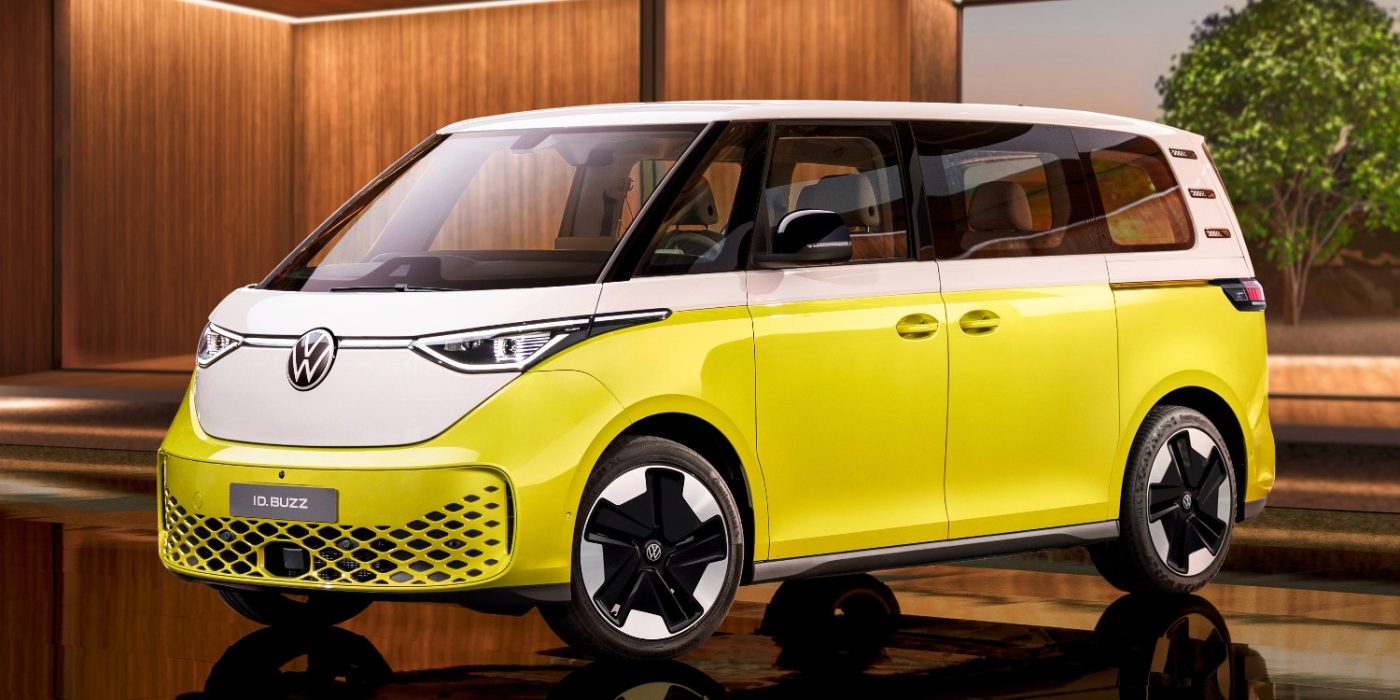
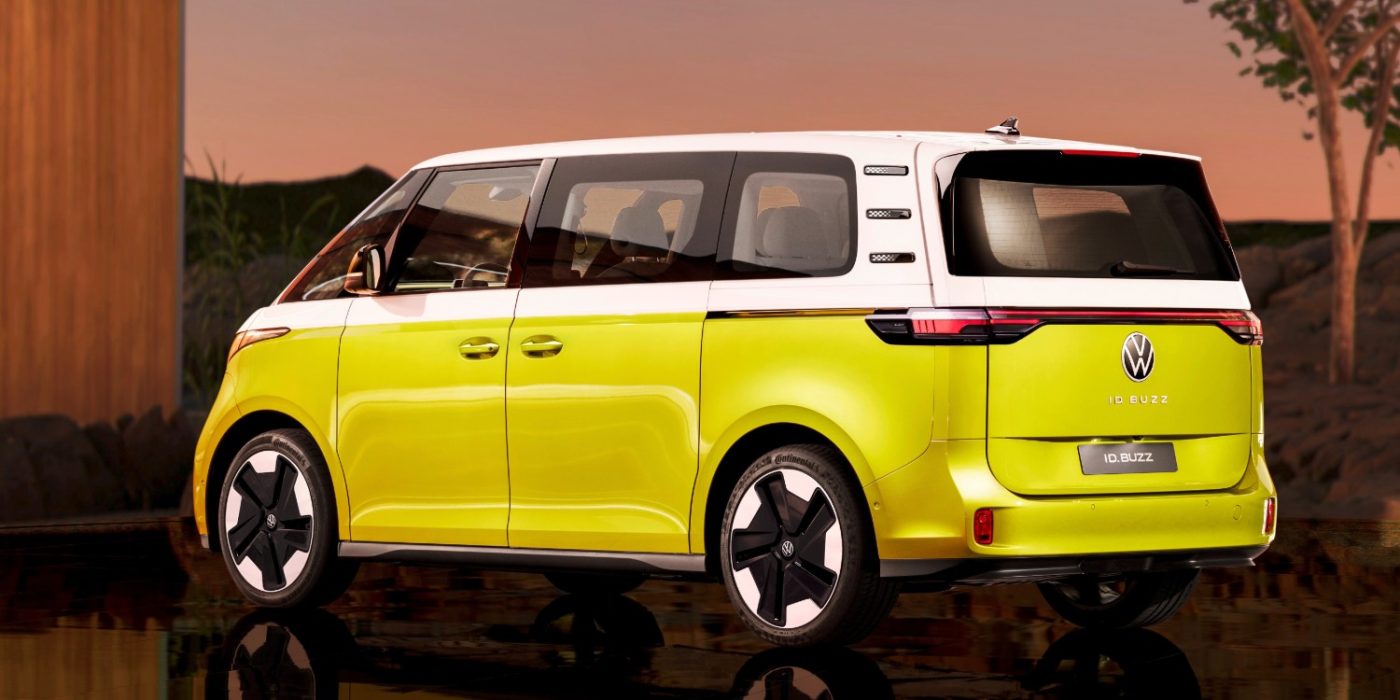
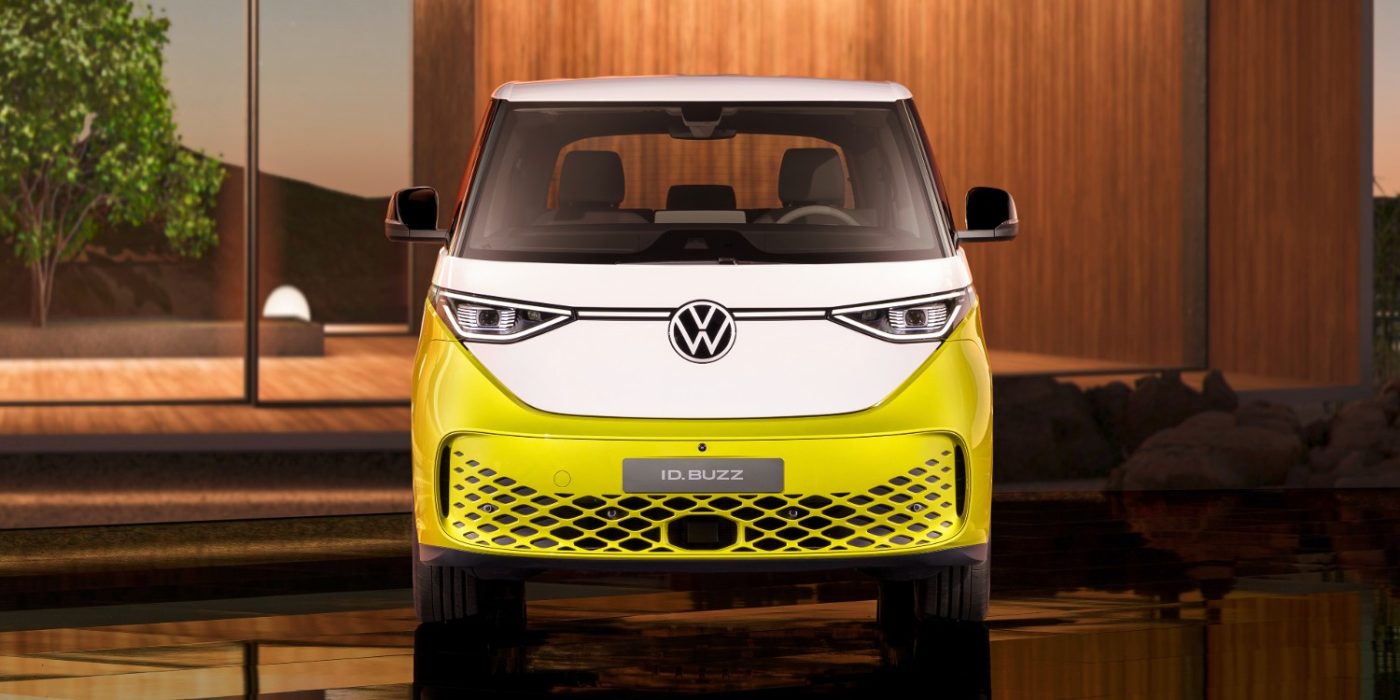
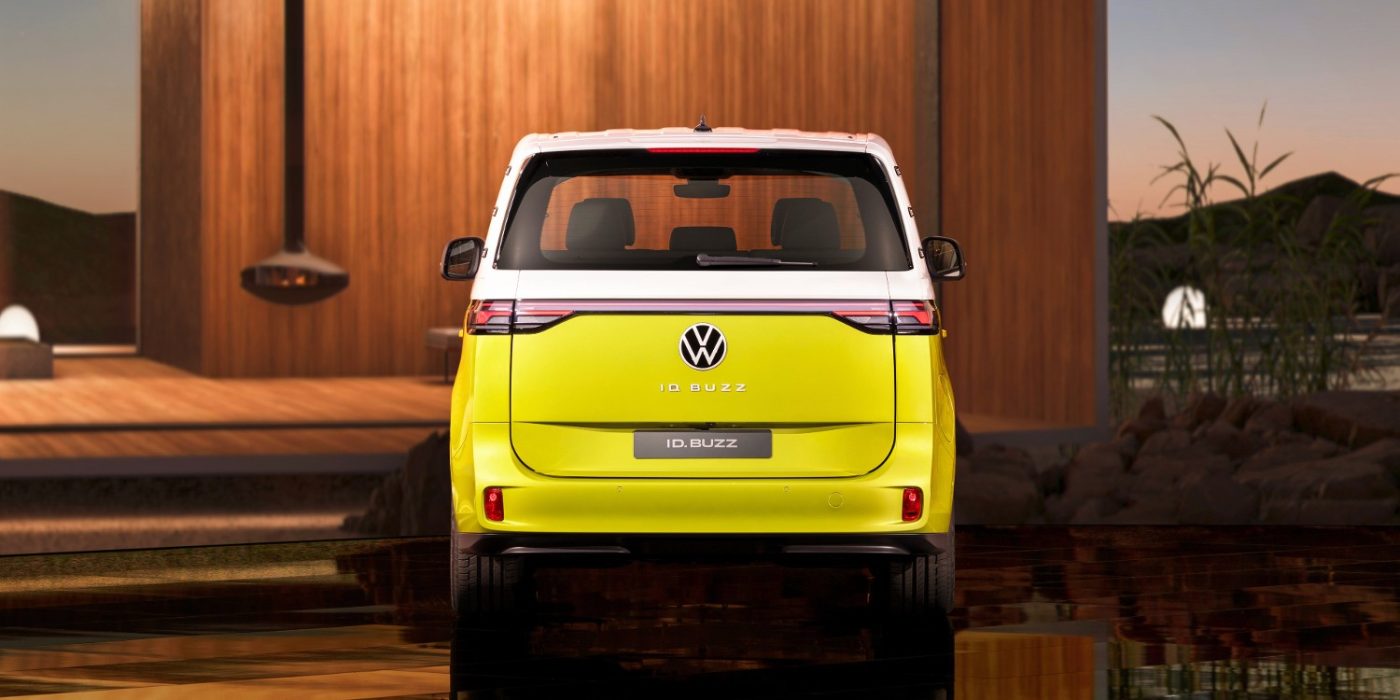
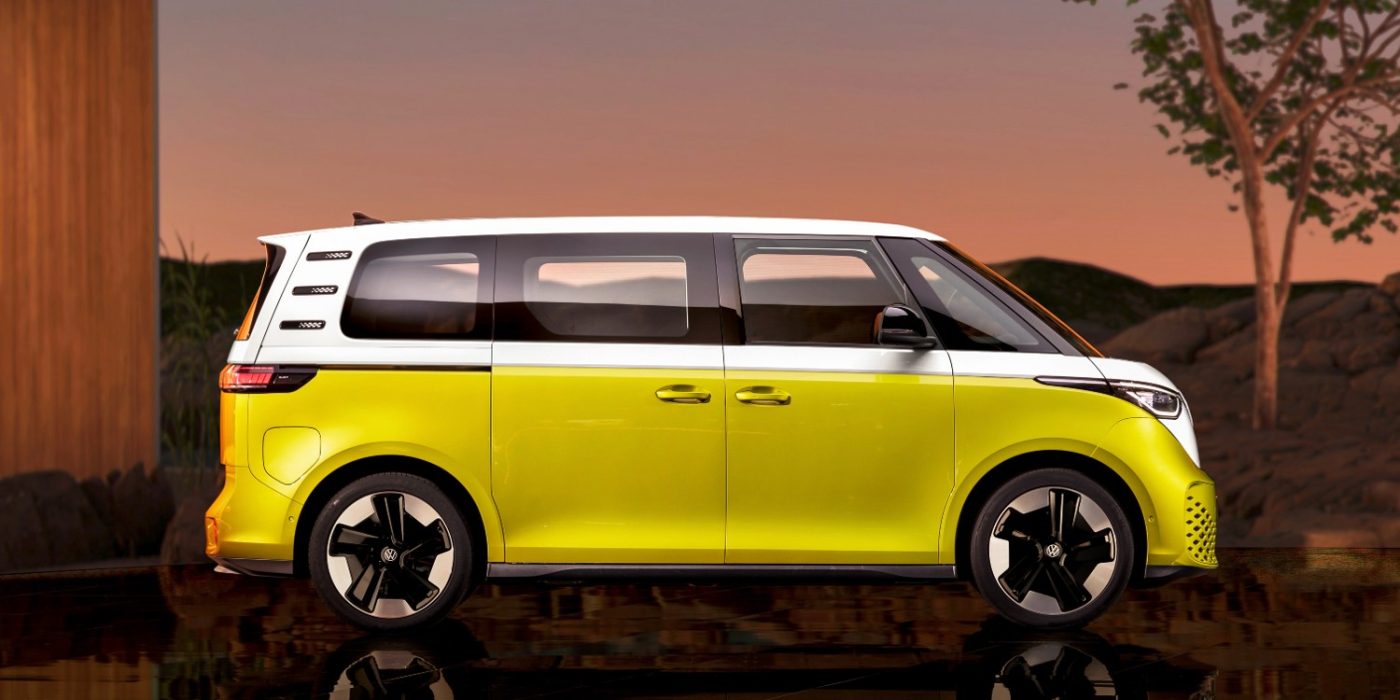
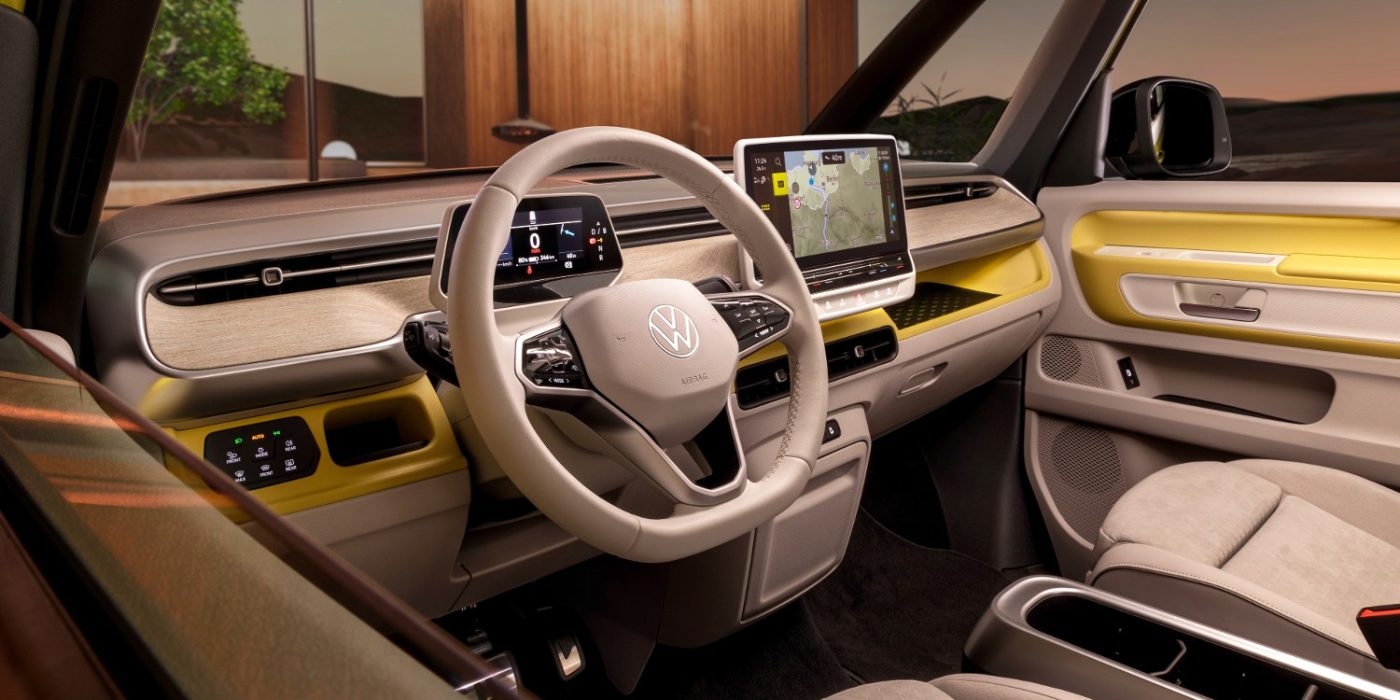
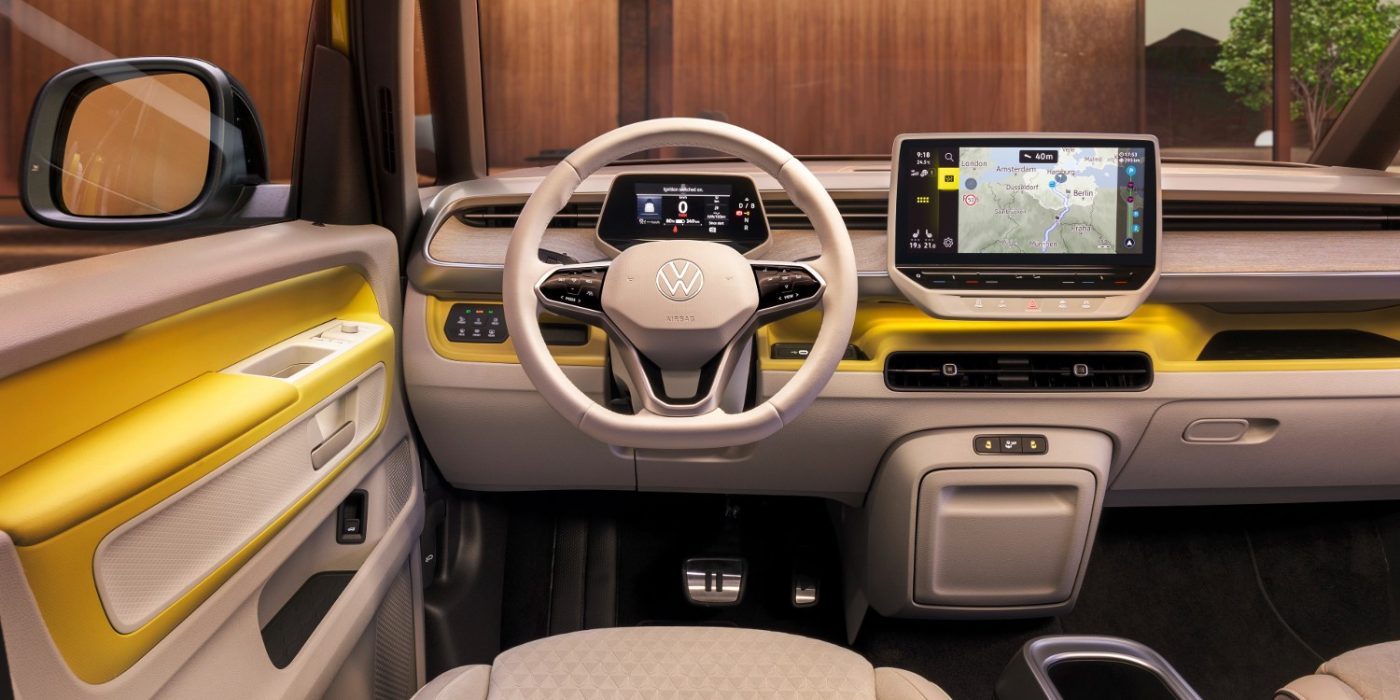
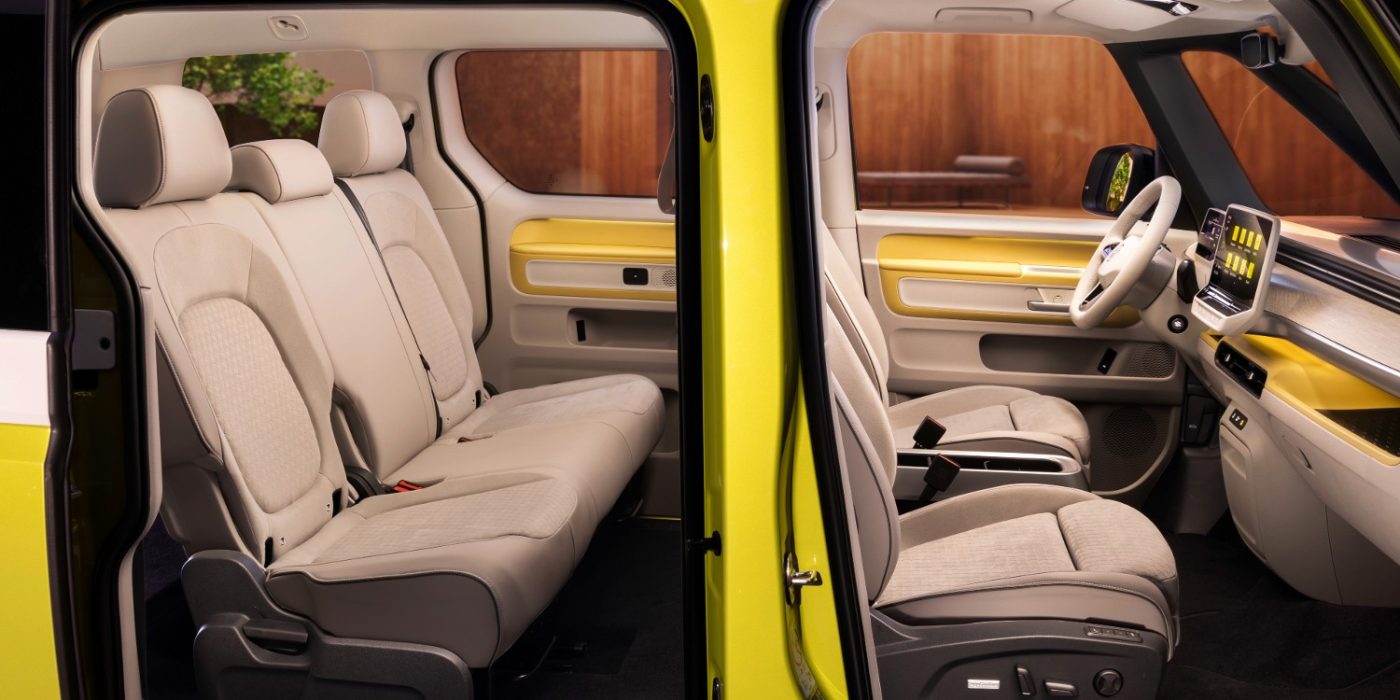
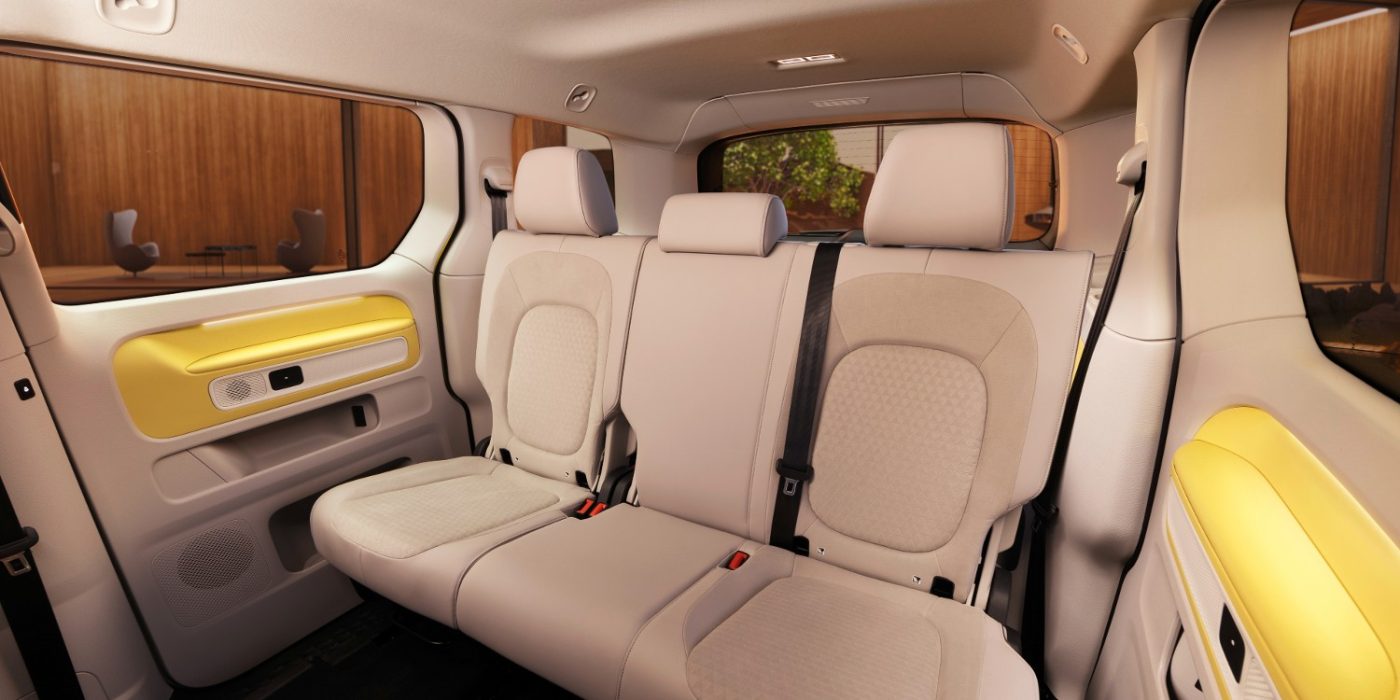
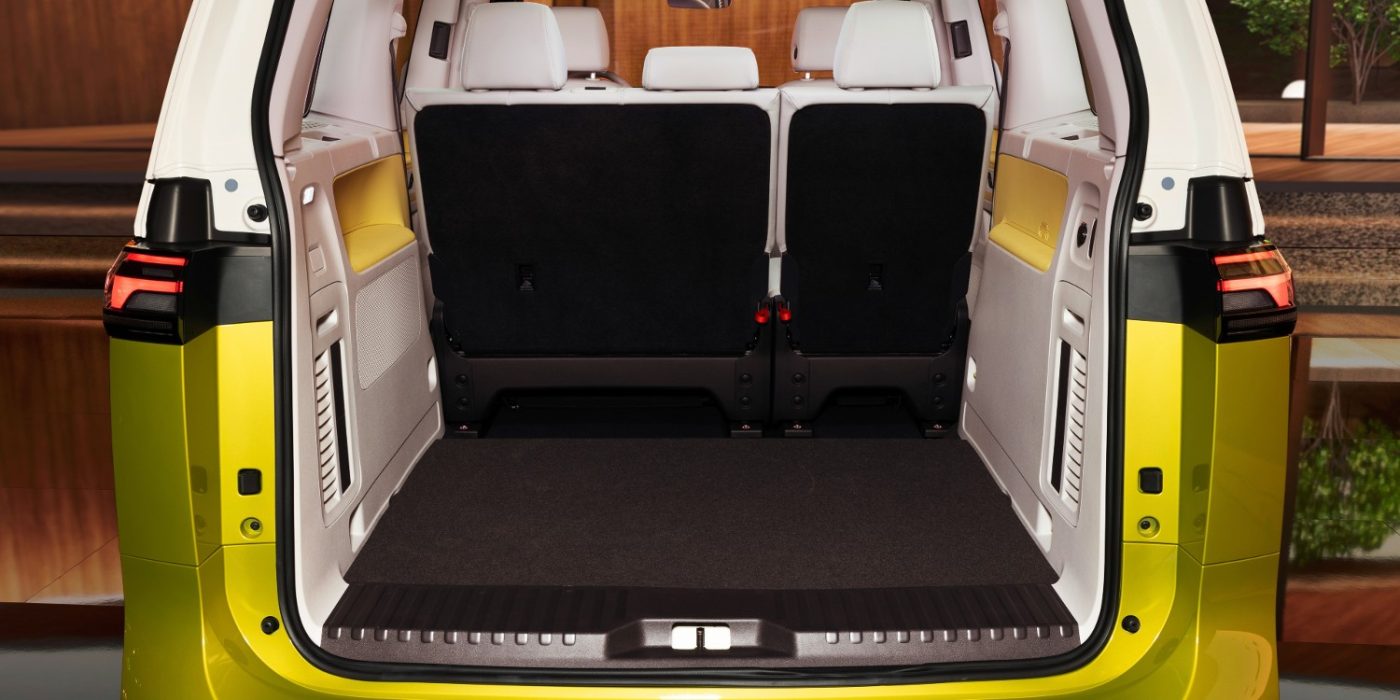
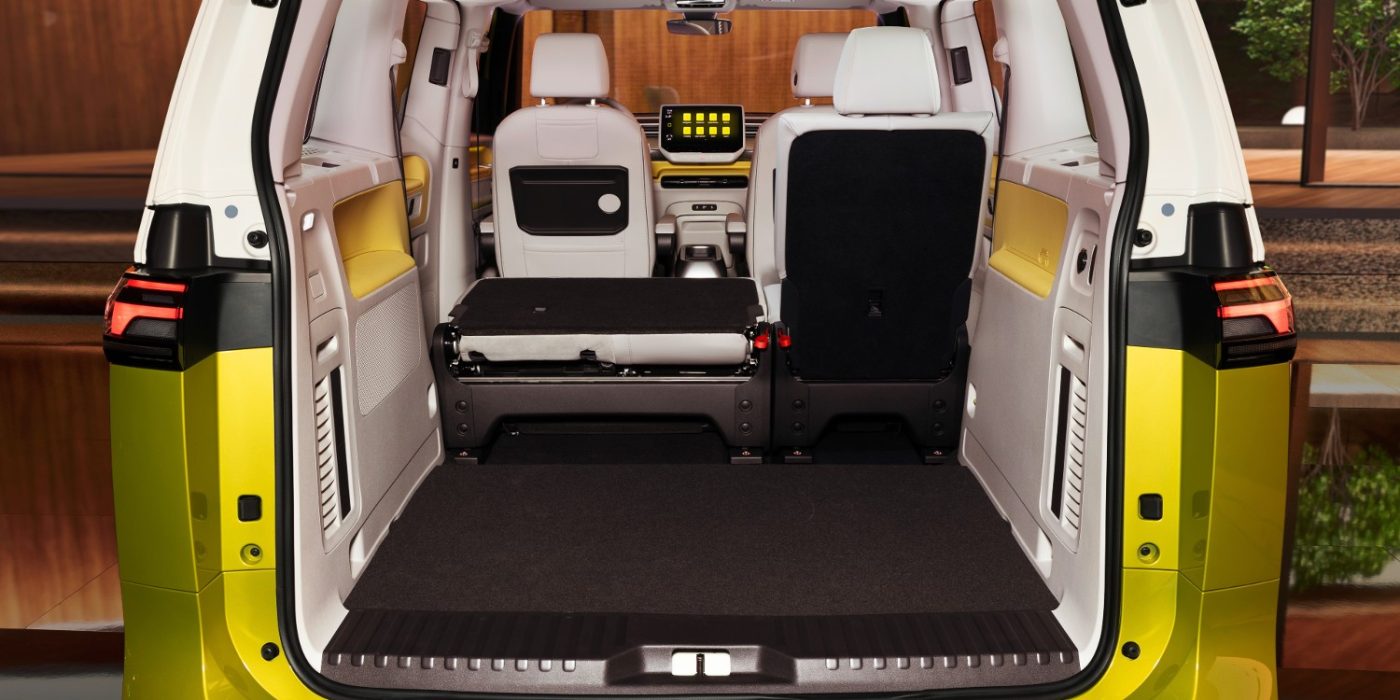
Nevertheless, in addition to the maximum 100 kW charging power of the Stellantis vans and 45 minutes charging time, the ID. Buzz brings a noticeable improvement on paper. This is hardly surprising, considering the ID. Buzz is based on a pure electric vehicle platform and brings along its latest state of development. However, Stellantis is still making its models available with a combustion engine, and these have been on the market for several years.
But if VW is to be believed, the ID. Buzz isn’t about the last kilowatt of charging power or a few more kilometres of WLTP range anyway. “The ID. Buzz brings a lot of sympathy and closeness to people back onto the road,” says Jozef Kabaň, Head of Volkswagen Design. He says it’s all about the unique proportions. “With the T1, I’m virtually sitting on the front axle – no front overhang. For all its safety relevance and technology, even the ID. Buzz has super short overhangs.”
With a length of 4.712 meters, the ID. Buzz has a wheelbase of 2.988 meters and short overhangs. However, the MEB van does not quite match the original, not even in terms of its lines. Instead of a continuous front – as in the concept – the production model has a clear step between the front hood and windshield, especially from the side. However, the break in the design is easily explained: VW was able to dispense with details such as windshield wipers in the concept, but not in the production model – and they have to be installed somewhere and as aerodynamically as possible.
On the subject of aerodynamics, VW gives the cW value of the ID. Buzz is 0.285, the ID. Buzz Cargo comes in at 0.29. VW rejoices that a Bulli has “never before” been more aerodynamic. That may be true, and given the ID.4’s cW value of 0.28, the 0.285 is certainly respectable. However, VW does not specify the Buzz’s frontal area, and, as a result, a statement on how aerodynamic the ID. Buzz realistically is, is difficult to make. However, the minibus will not come close to the up to 520 kilometres WLTP range of the ID.4 with the same battery and engine.
In one respect, however, the ID. Buzz will be ahead of the ID.4 in one respect: VW announced that both the five-seater and the cargo variant will be launched directly with the bidirectional charging function in the fall. Other MEB models will get this function with the update to software 3.1. However, all MEB models will need a special DC-BiDi wallbox for this.
Plug&Charge now serial
In addition, the ID. Buzz Plug&Charge capable. The car authenticates itself at corresponding charging stations and starts encrypted communication, thus settling the charging process. The process happens via Volkswagen’s ‘WeCharge’ charging service. Anyone who wants to use a different EMP at the charging station must continue to use the charging card.
It is not only in terms of drive and charging current that the ID. Buzz is sustainable, but also in other features. The vehicle’s paints – eleven in all, including the two-tone paint – are bio-based. In addition, the ID. Buzz animal-free, as even the steering wheel rim is made of a synthetic material rather than leather. For some seat covers and floor coverings and the interior headliner of the ID. Buzz use recycled materials, among others.
For other features, the ID. Buzz uses familiar MEB technologies, such as the LED matrix headlights or the ID. Light. The interior features a Digital Cockpit with a 5.3-inch screen diagonal, with either a ten-inch touchscreen in the centre or a twelve inche version with the optional ‘Discover Pro’. Unlike in VW’s previous MEB models, the gear selector is no longer located on the driver’s display, but is designed as a steering column lever.
Some functions of the assistance systems are new. The ‘Memory Function’ remembers the automated parking on a previously saved route. Travel Assist with swarm data” enables partially automated lateral and longitudinal guidance within the system limits over the entire speed range and, for the first time, assisted lane changes on highways (from 90 km/h). When available, ‘Travel Assist with swarm data’ relies on a detected lane boundary to maintain the lane – for example on rural roads without median markings.
Prices still unknown
In addition to assistance systems, space is also an important criterion – especially for minibuses. The ID. Buzz can still load up to 1,121 litres with five people on board; with the second row of seats folded down (and consequently only room for two people), the electric bus can fit up to 2,250 litres.
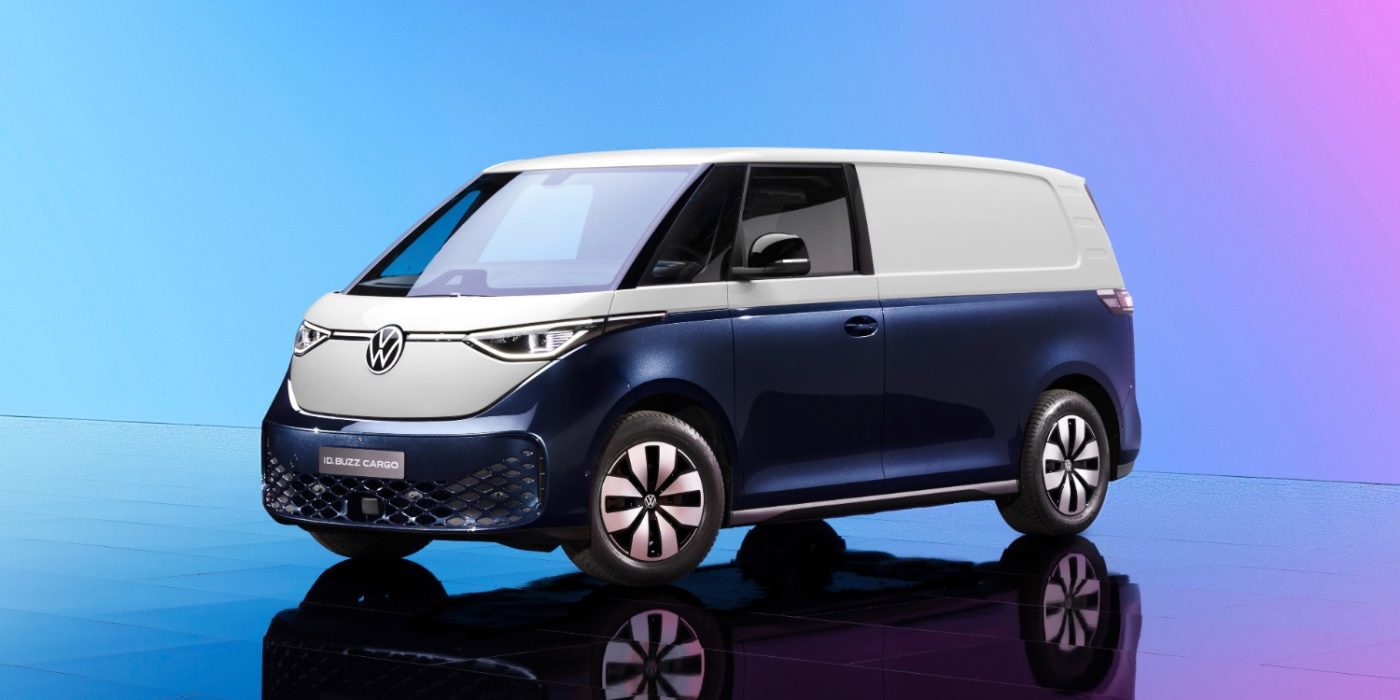
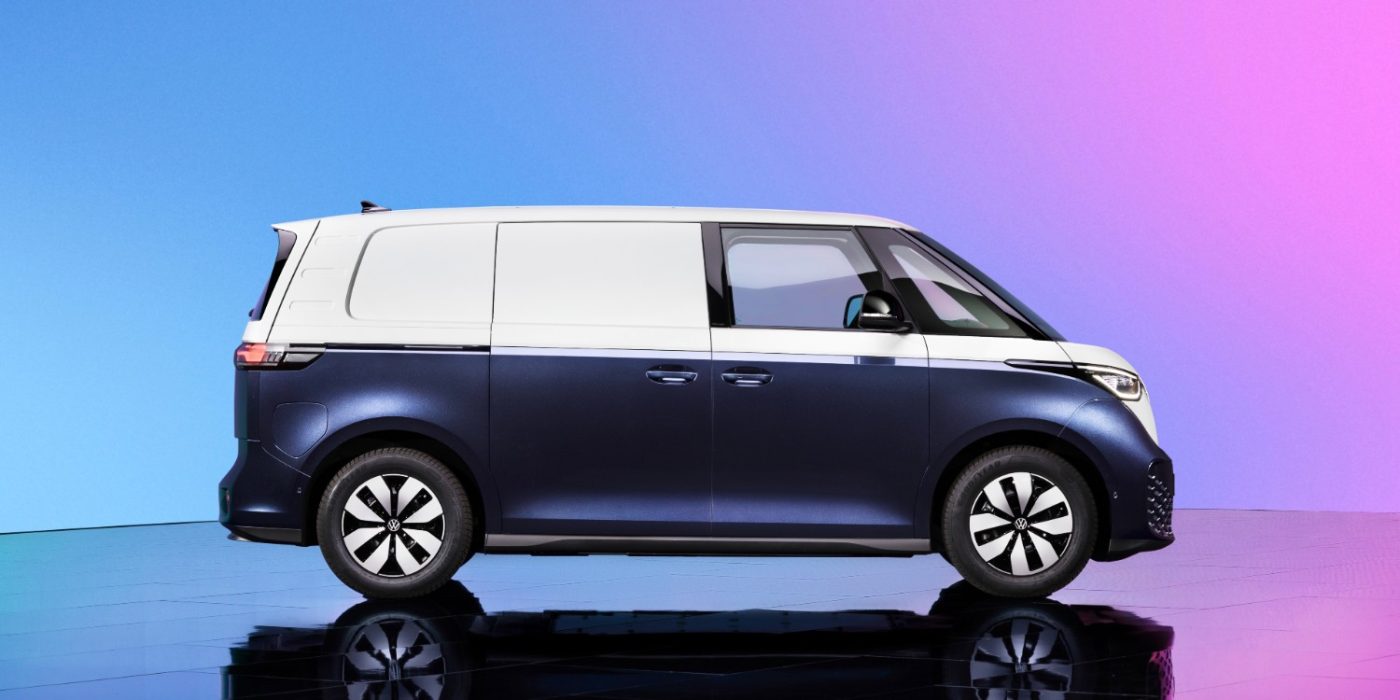
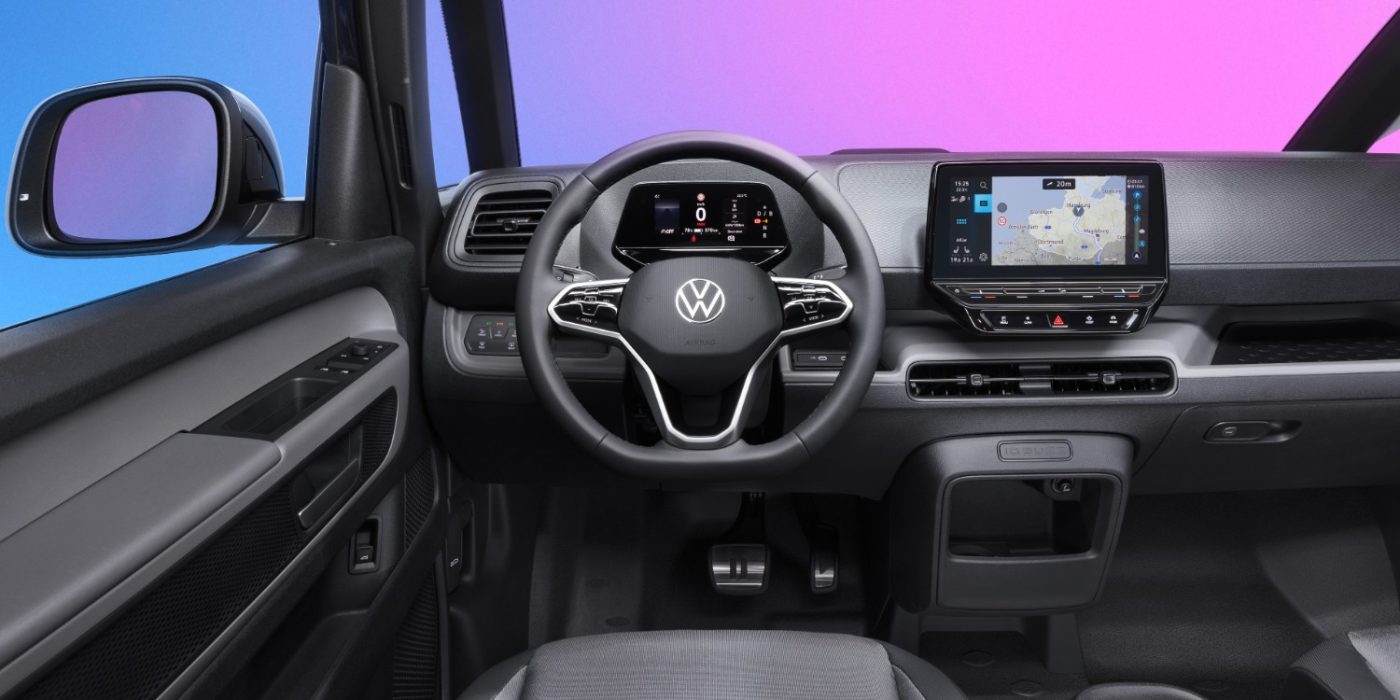
The situation is different for the ID. Buzz Cargo, which can load up to 3.9 cubic meters (or 3,900 litres) with its fixed partition. The cargo area offers space for two EUR pallets. However, the ID. Buzz Cargo’s permissible total weight of 3,000 kilograms and a maximum payload of 650 kilograms. This means that heavy goods should not be lashed to the two pallets.
The situation with the trailer coupling is still open: In the announcement, VW lists the “trailer hitch foldable” only for the Cargo model, but not for the passenger car variant. The towing capacity is also not mentioned, but MEB models like the ID.4 come to 1,000 kilograms with rear-wheel drive and up to 1,400 kilograms with all-wheel-drive – this comes with the ID. Buzz will probably come later.
VW has not yet announced prices for the two variants. The market launch is scheduled for May, and final prices will be available by then at the latest. A few weeks ago, the German publication Auto, Motor und Sport already assumed a base price of 53,900 euros before subsidies for the five-seater, while the Cargo is expected to cost 38,900 euros (net).
Reporting by Sebastian Schaal, Germany.
Source: Info via email

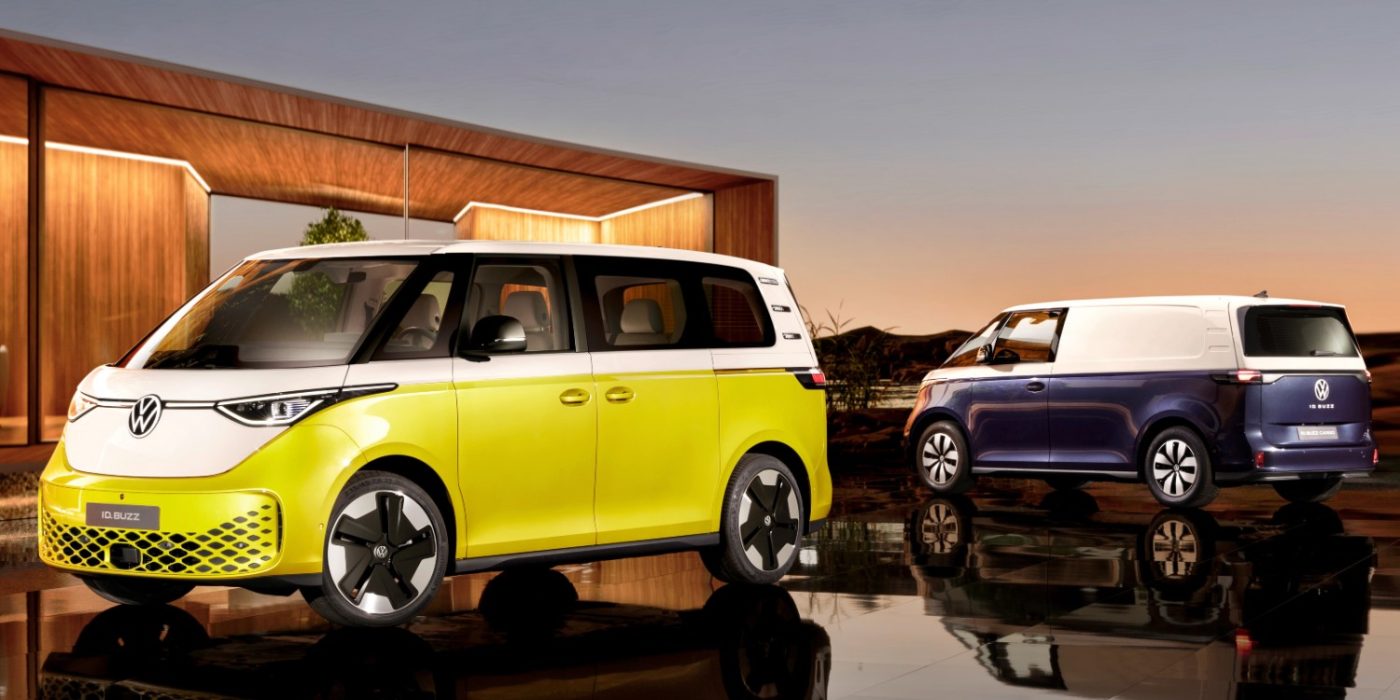
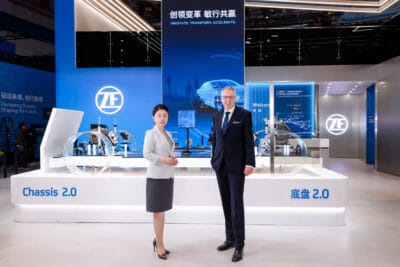
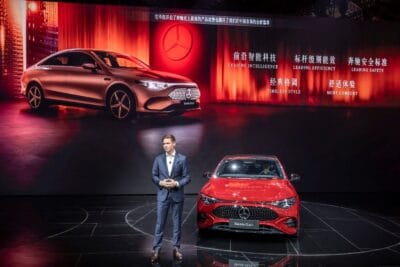
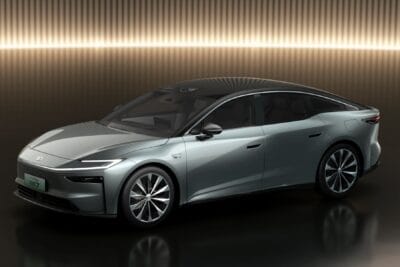
1 Comment